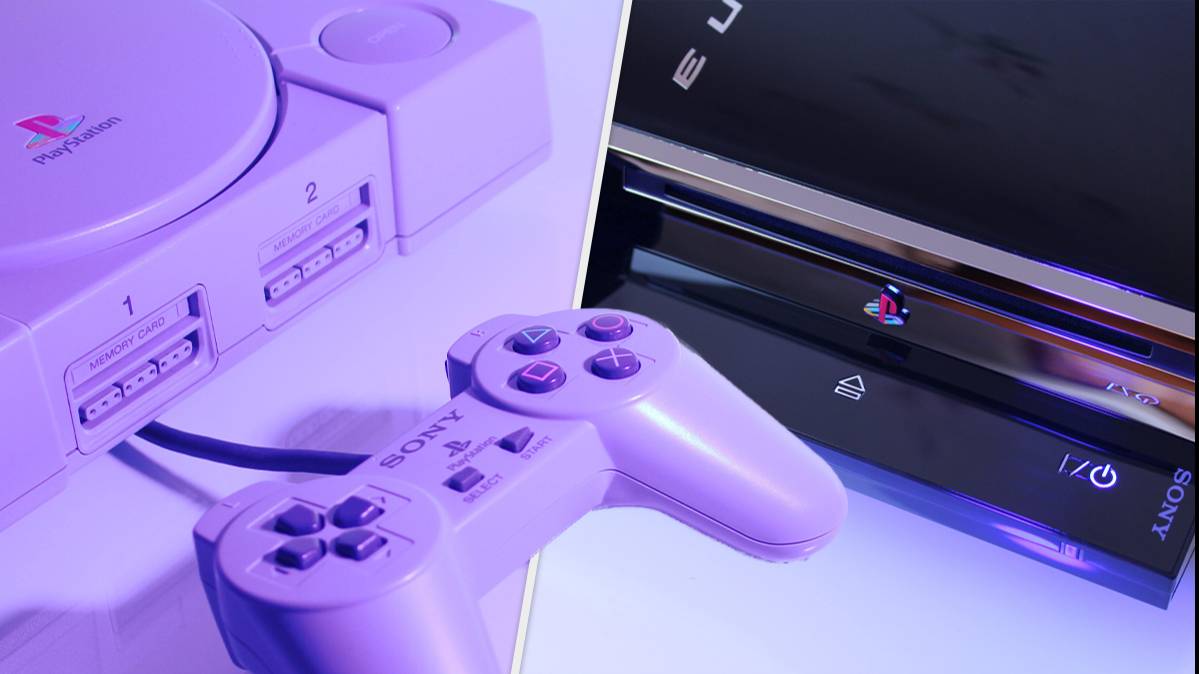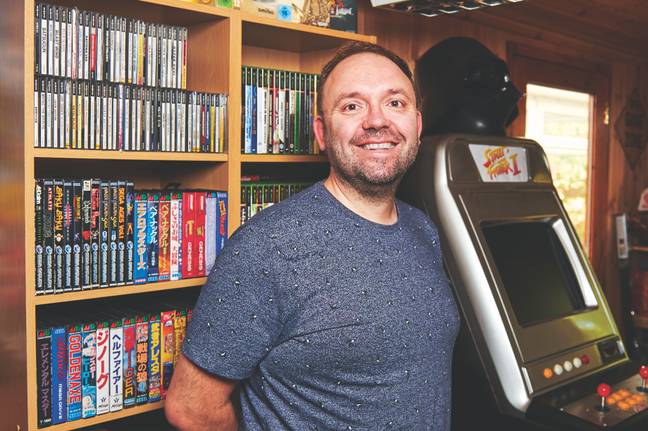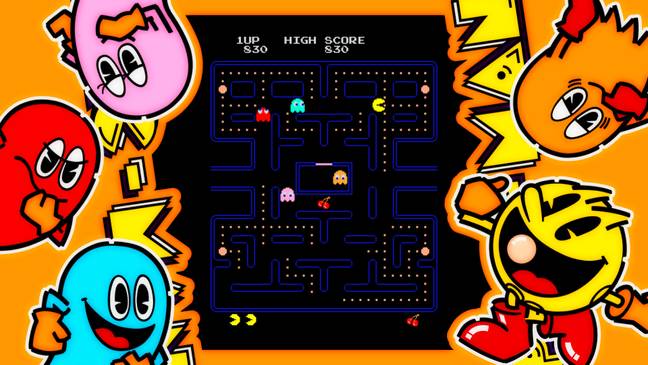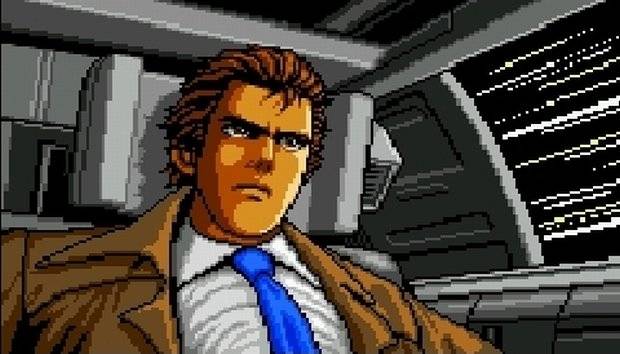
Retro Gaming Isn’t Mario And Sonic Anymore
As a player of video games now in their 40s, I’ve had a lot of consoles come and very few of them go. A collector, maybe? A hoarder, is what my wife would say. Either way, I’ve plenty of gaming systems from the 1980s, ‘90s and ‘00s in my home (alongside the modern, 4K-ready offerings, of course), many of which I regularly play on – and not simply to feel a nostalgic kick. Because retro gaming is much more than a history lesson in how we got to here – the classics of the past really can hold up beside today’s engrossing open worlds and multiplayer socialising, as experiences that don’t need remakes or remasters, or any of that. But, you know that. Anyone who knows games knows that. Yet there’s still a question hanging over retro, in 2022: where do we draw the lines?
This year, the Xbox 360 turns 17 years old, while the PlayStation 3 and Nintendo Wii will celebrate their 16th anniversaries. The Wii’s successor, the unfairly maligned Wii U (it’s a great console, and I will fight you over this), will be 10. Double digits all, for consoles that don’t feel all that old – at least not to those of us who’ve got a few decades on the clock (this being relative, as if you’re 18 now I’m sure the 360 appears ancient). In my mind, the 360 and PS3 are both HD-ready, online-enabled machines much closer to those we use today than what came before them; and they played host to a plethora of game series that really found their feet in that generation, and continue to be successful today: Assassin’s Creed, Mass Effect, Gears of War and Uncharted, for example.

Then there are the huge games, singular, that appeared during that same period: Minecraft, Grand Theft Auto V, Mario Kart 8 (which debuted on Wii U before becoming a juggernaut on Switch), The Elder Scrolls V: Skyrim, Red Dead Redemption. These are not retro games. Are they?
“In Retro Gamer we see retro as anything older than 15 years, which I personally feel is a good yardstick,” says Darran Jones, editor of Future Publishing’s Retro Gamer magazine, one of the few games media presences that actively focuses on the past rather than the present. “That reasoning is because it generally means two generations of consoles have passed, which is another yardstick gamers often use for defining retro. Ultimately though, it comes down to the individual – and I’ve learned that most people simply define retro as, ‘What I played when I was a kid’.”

Which may explain how some younger readers can see the 360 as a retro console, while I’m struggling to come to terms with that. Turns out, I’m not alone in feeling that way. “In my head I know ‘retro’ is a moving target,” Bex Trista, aka TristaBytes on Twitch, YouTube and more, tells me. “However, in my heart I guess I think of retro as more of a mixture of nostalgia, my denial that the ‘90s are over, and a certain range of visual styles now. Gaming has reached a point where the difference between generations is so small in comparison to before. The difference between a Spectrum and a Mega Drive game was phenomenal – much less so looking at the changes between say, the Xbox 360 to PlayStation 5, where the games feel more like constant smooth iterations rather than taking huge leaps.”
I think that’s what really makes me pause when labelling the PlayStation 3 and Xbox 360 retro systems: the fact that these games predominantly look, feel and play much the same now as they did a decade and a half ago. There are refinements, of course; and new tech allows for a greater array of bells and whistles to be folded into the experience. But play a Call of Duty or a GTA on 360, and then the latest entry on a Series X, and the overall impression left is much the same. Granted, the Grand Theft Auto V of 2013 is pretty much the same as the Grand Theft Auto V of 2022 – but for the most part, even several iterations later, the core gameplay loops of big-selling series have remained untouched for years, and in some cases since the era of the PlayStation 2.
The PlayStation 2 is categorically a retro console – check out our guide to its best games in the video below…
However, some can confidently state that yes, the 360 is retro now, so deal with it. “It’s totally retro,” says Brandon Saltalamacchia, the founder of the Retro Dodo YouTube channel and website (and who is absolutely the youngest of the people featured in this piece). “As the gaming industry moves forward and newer hardware releases get further and further apart, the ‘age’ of retro consoles will get larger and larger too. For example, next year the PlayStation 4 will be 10 years old! But is it really ‘retro’? To some maybe, but to me not quite, even though it has 10 years under its belt. That’s why I stick to the ‘multiple generations’ threshold.”
So by that logic, anything that’s, let’s say, two generations back counts as retro – the Xbox 360 and PlayStation 3 are retro. When I wrote a book on retro gaming in 2019, my publisher and I debated on where to draw the retro line. We landed on the GameCube, PlayStation 2 and original Xbox era; but even then it felt like we could have nudged it further, closer to where we are now. One of the issues I think we have with committing to calling these consoles retro, though, is the wildly different games they enjoyed at the start of their lifespans, compared to the end. Look at a game like The Last of Us running on a PS3 today, released in 2013, and it doesn’t look retro at all; yet the original Uncharted: Drake’s Fortune of 2007, made by the same developers, Naughty Dog, does look dated. It’s stiff, its movements unreal, its visuals closer to the console generation before it but awkwardly upscaled into muddy high-def.
“If you play a lot of the early games on those systems, you’ll discover that they certainly don’t feel like new games, even if they may sometimes look like them,” Darran says. Also confusing matters and blurring the lines is the fact that developers continue to make games for older hardware – new software for retired machines has never been bigger, and that’s something that Bex feels is keeping old-school consoles relevant.

“People are making incredible games for the Dreamcast, Game Boy, Mega Drive and Commodore 64 to this day, and even more, which have a purposeful retro style even if they don’t run on retro hardware,” she explains. “So I guess ‘retro’ has become an ethos, and a style of game design to me now. Or, I’m just in denial. Let’s just say I’m certainly not ready for calling the 360-era retro. I have friends with kids older than that.”
Now that we’ve loosely defined retro in 2022 as, I guess, anything that’s either a couple of generations old or has a distinctively throwback style to it – I suspect we’ll never formalise a categorisation, and that’s a good thing – I’ve another bone to pick with certain gaming audiences of the here and now.
Something that really grinds my gears is the suggestion that older games hold zero appeal for players raised on contemporary experiences. When someone asks me what a ‘perfect’ game is, I think Tetris, Pac-Man, Super Mario Bros. 3, Streets of Rage 2, R-Type – not to be contrary for the sake of it, but because these are games that nailed their MOs comprehensively, with little to no padding, so very few compromises, and absolutely stand proud today, still, as legendary releases in their genres. Which isn’t to say I don’t think similar of newer games – The Witcher 3: Wild Hunt, Elden Ring and The Legend of Zelda: Breath of the Wild have set new high water marks for fantasy role-players in recent years, and the Forza Horizon series has taken arcade racers into an enthralling new space of freedom and exploration. But it’s balderdash and blinkered in the extreme to claim that ‘old games’ hold no modern appeal.

“A good game is a good game,” says Bex. “My poor mother saved up for an entire year to buy one of my siblings a PlayStation when it first launched. It was incredible! The first true polygon 3D gaming we ever had. And then we found a £5 Pong machine at a second-hand shop. Pong is from before my time. It’s a few lines, a square and clunky paddle controllers. But the justified look of horror on my mother’s face after we played that Pong machine for hours and almost got into fights over the matches while the shiny PlayStation sat there for a few days tells you everything you need to know, really.”
“The 8- and 16-bit eras were a time when games could be anything from just a D-pad or joystick up to a maximum of six buttons – they were much simpler, physically, to play,” she continues. “The ones that are good have amazing gameplay that’s easy to understand and get into, and as someone with dyspraxia I can honestly tell you that if I’d started with the complicated dexterity-demanding controllers of modern consoles as my entry, I might not have become a lifelong gamer as physically games are so much harder now.”
That simplicity, that accessibility and intuitive onboarding of games that give you just a couple of buttons to work with, is a winning factor when it comes to parents connecting with their kids through video games. I can speak from experience there – and it’s telling that many successful modern local-multiplayer games, like Overcooked or Mario Kart 8 Deluxe, aren’t especially complex controls wise. And exploring these older games can also be fun for establishing connections with series that persist – and sell extraordinarily well – to this day. Says Darran: “I’d argue that the strong connections to most Nintendo games are there largely because it’s one of the few publishers that still constantly publishes games tied to their earlier consoles. But I don’t think you have to have a nostalgic connection to old games in order to enjoy them or for them to mean anything to you. The Beatles weren’t even together in 1973 when I was born but they’re still one of my favourite bands, and I can say the same about a lot of films from the 1950s to the 1970s as well, which I enjoy.”

The younger Brandon offers an alternative voice, though: “The 8- and 16-bit eras honestly don’t have a lot of appeal to the 20-something gamer in my opinion, as much as it pains me to say that. Modern-day gamers typically want something more fast paced, something more immersive, and going back to the retro-game era just doesn’t hold the same immersion that new games attract. That said, there’s nothing like playing Tetris on a Game Boy DMG, nothing!” He adds that remakes can bring older, classic titles to the attention of younger players, likewise “remasters, movies and even TV shows”, and highlights a popular handheld series as a prime example. “Pokémon is one of the world’s largest franchises, and simply knowing where this franchise started is a good reason to jump into it.” Pokémon has enjoyed a raft of remakes, with all-new versions of its Diamond and Pearl entries, originally on the DS, coming out for Switch in late 2021.
Every one of my interviewees for this piece still regularly plays old games and, importantly, enjoys them. They’re essential for their careers, but remain a passion point. And they all have their collections too, albeit with the understanding that the fun side of that can become a little muddled into something else. “I think there’s a very fine line between collecting and hoarding, and it happens in every hobby, not just video games,” says Darran, who does buy every older game “with the intention of playing it at some point”. “I am playing on the Game Boy every week for sure,” says Brandon, but for him owning games isn’t a big deal in and of itself, as he adds: “If I don’t use them or play them at least every six to 12 months, I sell them.” Bex, meanwhile, retains some focus with her collecting:
“I mainly just have my original games – which thankfully I hoarded and never sold or lost – and slowly I get things I wanted as a kid, but couldn’t have at the time. I might be in denial that it’s not a collection, as it does take up a fair amount of space… but I am not trying to complete anything or get every version or every game for anything. I just play the games I couldn’t afford as a kid.”

It’s this last point, on affordability, which I feel has led to a lot of people choosing to emulate older games rather than seek out original copies. Collecting physical games can be incredibly expensive, with some of the so-called essentials for any console often selling on second-hand markets for eye-watering prices. (I picked up a reproduction of Konami’s Snatcher on Mega CD the other year, as the cost of the actual 1994 PAL release is staggering.) What’s the harm, you might think, in downloading a ROM or two – especially if those games aren’t actively available anymore, for modern systems? And, mostly, the harm is negligible if not non-existent, but nevertheless it’s illegal, it’s stealing. And it’s an issue that all three of my interviewees have thoughts on.
“Retro game prices have skyrocketed beyond affordability due to game preservation being non-existent, collectors hoarding hundreds of games and investors snapping up the rest in order to grade them to then sell for mass profit,” says Brandon, whose Retro Dodo channel regularly covers emulation handhelds from the likes of Anbernic and Powkiddy. “If the consumer wants to play Pokémon Red, they should be allowed to buy it officially from Nintendo via ROM format or on current-generation consoles through whatever means, at an affordable price, but unfortunately we are in a time where developers are greedy and old games and consoles are far too expensive for the average consumer to afford. Hence, why emulation is booming and handheld emulators are becoming the go-to for new gamers to explore old games. There’s a huge market here for Nintendo and others to take advantage of, but they would rather you pay a subscription or buy their new remasters, which eventually you won’t be able to play when they close their stores or make it online only.”
“I think we should preserve everything we can,” says Bex. “Lost media is a lost piece of our history, and we see certain games worth thousands because there isn’t any other way to play them. Retro games, especially older titles, aren’t big as digital files and I absolutely think game developers and publishers should be encouraged to keep and distribute them to anyone who wants to play them. Subscription-service-only models (like the current Switch Online method of accessing NES, SNES and N64 games) are the best and worst in equal forms. They allow us to access, play and preserve everything without having to spend thousands, but also mean that the individual has nothing physical anymore to keep something safe were the service to go down. I would love a download-to-keep option to be available on them, so for a small single fee anyone who wants to watch or play offline could do so. Then we would have the best of both worlds.”

And for Darran, it’s partly a question of who is losing out when the player emulates rather than buys a game. “Video game companies are pretty poor at making their back catalogues easily available, so it’s unsurprising that many gamers resort to piracy in order to play games. Emulation has become far more prevalent recently, particularly as the prices of retro games rise. If you’ve got a choice between emulating a game or buying the same game for £200-plus from a private buyer, where the original developer doesn’t benefit from that sale, some will suggest that piracy in that instance is okay. But it’s certainly a thorny issue. I’m not personally a fan of Nintendo’s (subscription-only) approach as you’ve no idea how long a game will be around, but at least they’re adding extras to justify the price charged. People like Frank Cifaldi and everyone else at the Video Game History Foundation are all doing a terrific job of preserving old games, and it’s a shame publishers and developers can’t follow suit.”
As the needle shifts on what is ‘retro’ gaming, then, it’s clear that certain issues will stay the same: publishers really should make their archives more easily available, and the classics will never, ever go out of style. Personally, I can’t wait to see what games from this generation will be as highly regarded as Tetris, as Pac-Man, as Super Mario Bros., in another 30 or 40 years. Assuming this supposed metaverse hasn’t swallowed us all by then and turned us into creepy ageless avatars with no ties to a real world we’ve left in ruin, obviously.
